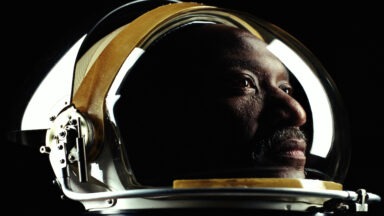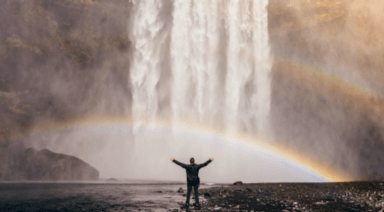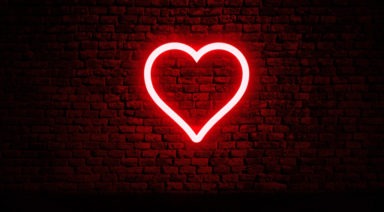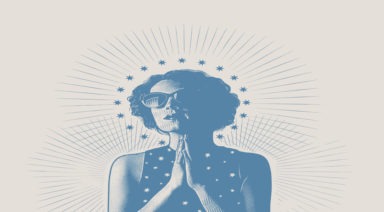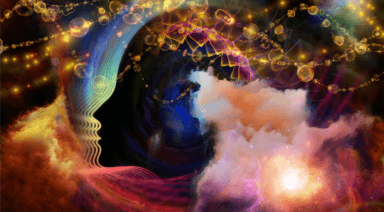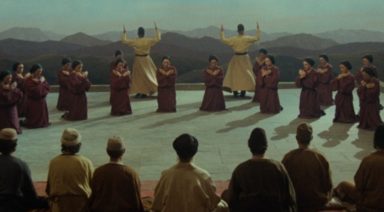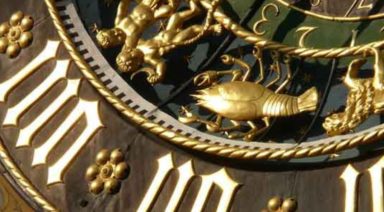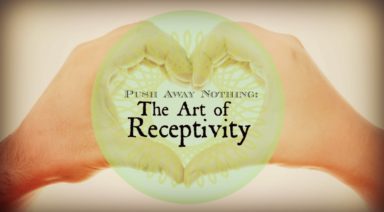How to Use Symbols to Manifest Your Desires

All of us in some way or another, are connected to, or influenced by symbols. When a group of Rastafarians started carving a totem pole out of a tree in a New York park they made a statement that affected the whole community. Countless people passing through the park were drawn to the totem feeling the connectivity this project initiated. Unwittingly, they were challenged to question the meaning of symbolism.
Symbolic connections act like antennae that enable us to tune in to the whole and understand the self, almost like road signs connecting a traveler to a destination.
Imagine All the Symbols
Imagine all the symbols in life we are already familiar with. Everyone relates to a circle. For some, it may signify the constant cycle of changing life or unity, wholeness and infinity or eternity. A river represents life-force and the passage of time. It also represents yielding. The symbol of a cup shows that form cannot exist without space, and space without form. There’s the dove that represents freedom. Symbols are powerfully present in religion – the cross, the Star of David, the endless knot, the tree of life, or the plait is present and recognized in most of the world’s awareness.
A Source of Wisdom
Whether we wear our symbols close to our bodies inscribed in gold or silver, hang them in our homes or tattoo them onto our bodies they are strongly inscribed in our minds. Our symbols become a source of wisdom and power for us. They express things that cannot be explained verbally and we often call on them for healing, representation, and ritual. They’re said to appear to us to awaken the ancient wisdom in our DNA.
A Source of Positivity
Imagery and visualization are becoming more popular as a way to replace negative thoughts or fear and to actively draw in positivity. We can use symbolism in conjunction with imagery to create a powerful effect. Texan based psychologist Jeanne Achterberg explains that “Imagery is a wedge or an entrance into the ability to translate and transform the very nature of our being.”
Find Yourself Symbolically
When working with imagery Achterberg suggests finding out who you are symbolically. You may decide you have the nature and qualities of a certain animal, flower or element. For example, you may feel that wood best describes your personality or that you capture the essence of a fox.
A good exercise to do is to feel yourself through the elements. There will be certain elements or animals you feel naturally drawn to, these are clues you can use. It doesn’t matter if astrologically you are water, fire, Earth or air, see what you feel you are by absorbing yourself deeply in the idea of each of the elements separately and see which one you are most drawn to. Do this with animals, with flowers, with elements in nature like a river, tree, soil, sky, sun, mountain, moon, air or wind.
You could even do it systematically going through the plant kingdom starting with a list of different herbs, then flowers, then plants, then trees. Crystals have strong vibrations that usually call people to them quite specifically. You could look at insects, then animals, moving onto landscapes like desert, mountain, river, valley, lake, then the elements; wind, wood, fire, earth or water. Planets can also be included, and of course, shapes.
“Once we become aware of our symbolic nature we begin to identify our own story and wholeness. This process,” asserts Achterberg, “is a way to bring people to know their own full stories and to reinvent those stories if they wish. If the stories in the mind change, thoughts change, emotions change, and the body changes.” She explains that because thoughts are biochemical reactions – biochemistry influences thoughts.
Change or Adapt Your Story
Once you’ve found your story, see how you might want to change it. Using pictures and images, elements, animals and components of nature make it much easier for your mind to re-imprint the thoughts and images you feel are outdated. If you feel too serious and want a more playful aspect of your personality to emerge then using the image of a dolphin might work well for you. You can also use a symbolic version of an ant if you want to draw organizational and productive energy towards you.
Symbols are Pathways into the Psyche
Symbols act as connectors between different levels of awareness. These alternative levels or realities come to us to display hidden meanings and to serve as pathways into the psyche. They enrich the life of the mind. When we use a totem we have a link with another state of existence, which can assist us in conditioning our own.
Philosopher and psychologist Carl Jung found that when using dreams and art to assist in therapy, his patients often uncovered similar symbols. These, he maintained, came from the collective unconscious. He believes symbols generate themselves as an expression of a deep inner power of which we are aware, but which we cannot fully express in words.
Build on Your Understanding of Symbols
Old tribal medicine encourages building and developing an understanding of symbols to promote the wellbeing of body and spirit. Once the meaning becomes clear, new insights into the mind are revealed and often, meaningful symbols begin to show up with greater frequency. It is almost as if each symbol unlocks a door through which other symbols are then allowed to emerge.
By simply becoming more aware of symbolism you will automatically start to see more symbols and symbolic interplay in your life. Suddenly the emblem on the gate will become more apparent and more meaningful to you. You may notice a spear shape or triangle or any other shape seems to pop up in countless places, more often than coincidence can account for.
Meanings of symbols are buried deep in our psyche and we know what many of them mean without having to learn. You’ll see how easy it is to become familiar with the world of symbols.
It’s a language you learned at childbirth and left behind. When you start learning it again it just seems to come to you. More importantly, you can use them to guide you and enrich your understanding of life.
Using Tribal Symbols
Many symbols have centuries of thought and energy invested in them. We can ‘borrow’ specific symbols from different tribes and cultures to help us in important pursuits. If wanting to germinate an idea or project or to conceive a child, the African Ashanti tribe has a very strong symbol for fertility called Akua’ba. For protection, the Jain religion has used a symbol of the hand to represent non-violence and avoidance of harm to any living creature. In certain Native American tribes, the symbol of a big mountain represents abundance.
You may feel one of the ancient symbols has collective energy that will work more efficiently. You can draw it on a piece of paper and put it up around the house, you could get a silversmith to make up a piece of jewelry that depicts your symbol or you could sew it into a talisman or if you feel very strongly about it, turn it into a tattoo.
How to Use Symbols to Manifest
Achterberg believes we can create meaningful change in our lives by using a technique she calls specific imagery. This involves spending time getting into a completely relaxed state. Once that has been done, then, using all the senses, (not just the visual) imagine the outcome you most desire. See how it might unfold step-by-step. Experience what it looks like, how it feels, tune into the colors, the smell, the sound, be as present and as engaged as you can.
Then take the environment of where you are at that moment and turn it into a symbol. It’s basically creating a mental picture, focusing on it fully, then adding the intention of turning it into a symbol. See what emerges.
You’ll get a symbolic version that’s highly charged, filled with intention and very effective.
Practicing this kind of imagery for a few minutes daily will strengthen your ability to create the things you want in your life. If you have trouble visualizing, you may want to look at a dictionary of symbols and see if you can locate one that best represents what you are trying to conjure up.
If I imagine wanting to go on a beautiful long trip somewhere exotic, and I close my eyes and visualize this with the intention of turning it into a symbol, I see a beautiful big bird with wings outspread. I can see how this bird can carry my intention in a powerfully strong way. It captures my desire in a single picture and instead of having to visualize all the components of my wishes each time, they are all encapsulated in a neat package. Every time I think of what I want, I see the bird and know that it is adding a deep level of vibrational power to my desire.
Sacrifice as a Catalyst for Rebirth and Bliss in Joseph Campbell's Hero's Journey

Joseph Campbell is one of the most influential writers, philosophers, and professors in history. His work on mythology has taken native stories beyond their face value and deep into the human psyche, where they resonate with the core of who we are.
Campbell’s life’s work brought countless people across the world in touch with the collective unconscious that underlies our every thought and motivates us to seek happiness. His phrase “follow your bliss” is now a household prompt, thanks to a series of interviews with celebrated journalist Bill Moyers in the early ‘90s. Gaia members can now experience this timeless discussion, listening to episodes discussing “The Hero’s Adventure”, “Sacrifice and Bliss”, and more.
Campbell’s teachings applied the lessons of heroes and metaphors of mythology to our own lives. “A myth is not a lie,” he famously said, despite this commonly misused definition. Rather, a myth is a story meant to turn the mind inward to reflect upon itself and reveal the essential truths of reality and our relationship to the transcendent.
As Campbell explains in his series of interviews with Moyers, myth is often constructed as a hero’s journey — a pivotal course of events that slowly test the story’s protagonist and push them to the next step of unfoldment — toward transcendence. Each obstacle the hero experiences is a reflection of himself, as he is moved one step closer to sacrifice the egoic sense of self to the greater good, which is total consciousness.
When we study mythology, Campbell taught, we find the theme of sacrifice to be all-important. We must let go in order to receive what is already present. Campbell said, “A hero is someone who has given his or her life to something bigger than oneself.” The hero sacrifices his lower nature for his higher nature, and his safety for the one he rescues, or perhaps an object of desire for a noble cause.
Campbell taught that sacrifice is a theme that runs through all things natural — death (the sacrifice of a living being) gives way to new life in an ever-continuing cycle. But death is often metaphorical and may be the death of a habit, a pattern of thinking, or an attachment to something. Or, he said, “When you make the sacrifice in marriage, you’re sacrificing not to each other but to unity in a relationship.”



